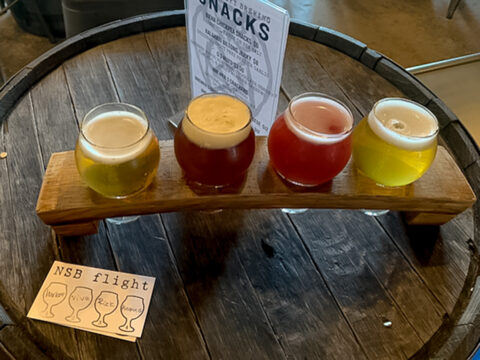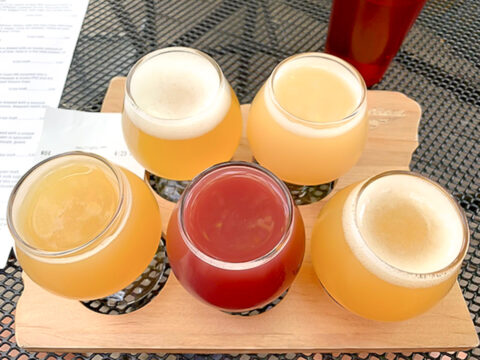
Belgium’s brewing tradition is as rich and complex as the beers it produces. This small European nation, with a population of just over 11 million, boasts approximately 1,500 different beers, crafted in over 200 breweries. This diversity in beer styles is a testament to a brewing heritage that dates back to the Middle Ages, making Belgium a revered name in the global beer community.
Back to the Beginning
The history of Belgian beer is deeply intertwined with the monastic life of the Middle Ages. Monasteries were among the first institutions to brew beer and did so in part to provide a safe drinking alternative to the often contaminated water of the time. This monastic tradition laid the groundwork for what would become a defining aspect of Belgian beer: diversity and quality. The secularisation of brewing practices in the centuries that followed only expanded this diversity, leading to the wide array of beer styles Belgium is known for today.
Belgian Beer Styles
Belgian beers are often categorised not just by their ingredients, but by their unique brewing methods and the regions from which they originate. Here are some of the most iconic Belgian beer styles:
Trappist Beers: Perhaps the most revered of all Belgian beers, Trappist beers are brewed in Trappist monasteries. There are only 13 Trappist monasteries worldwide and six of these are in Belgium. These beers range from golden pale ales to dark quadrupels, each with a rich complexity of flavours.
Abbey Beers: Similar to Trappist beers but brewed by commercial breweries, Abbey beers are often associated with monastic traditions but are not required to be brewed within a monastery. They typically include dubbels, tripels, and quadrupels, reflecting a range of colours and strengths but always emphasising depth of flavour.
Lambics: Unique to the Brussels region, Lambic beers are fermented using wild yeasts from the air, a process known as spontaneous fermentation. This method gives Lambics a distinctive sour taste. Gueuze, a blend of young and old Lambics, and fruit Lambics, which are Lambics fermented with fruits like cherries (kriek) or raspberries (framboise), are popular variations.
Saisons: Originally brewed in farmhouses in the French-speaking part of Belgium for consumption during the harvest season, Saisons are now enjoyed year-round. These beers are noted for their distinct peppery, citrusy flavours, and moderate alcohol content.
Witbiers: Belgian wheat beers, or Witbiers, are light, refreshing, and often spiced with coriander and orange peel. These beers are known for their hazy appearance and gentle sweetness.
The Role of Yeast in Belgian Beers
While Belgian beer is diverse, it’s also unique from beers brewed elsewhere. And this can be attributed primarily to one critical component: yeast.
The strains used in Belgian beers are numerous and varied, yet they share a common characteristic—a floral, sweet nuance at odds with many of the crisp, bitter flavours typical of yeast strains used elsewhere. This difference has become more recognised as brewing globally has evolved into a more refined craft. During fermentation, yeast not only produces alcohol and carbon dioxide but also generates a complex array of chemicals that can significantly enhance or detract from a beer’s flavour and aroma. Consequently, discussions among beer enthusiasts are increasingly focused on the merits of different yeast strains: the fruity “esters,” and intriguing “phenols” they produce, along with how they’re used in various beer styles.
Why Belgian Yeasts?
Belgian yeast strains are prized for their ability to ferment at higher temperatures than yeasts used in many other beer styles. This higher fermentation temperature promotes the production of a wide range of esters and phenolic compounds, adding to the characteristic fruity and spicy notes. The use of these yeasts is a tradition that dates back centuries, a testament to the Belgian brewers’ mastery of their craft and their understanding of how to harness the natural biodiversity of yeast to their advantage.
The Flavour Profiles
The flavours produced by Belgian yeast strains are as diverse as the beer styles themselves. For example, a Belgian Dubbel might feature rich malty sweetness with notes of dark fruit (think plums, raisins, and dates), while a Tripel might offer a brighter profile with hints of banana, pear, and a warming alcohol presence. The wild yeasts used in Lambic beers introduce a completely different dimension, with tart, sour, and funky flavours that challenge and delight the palate.
But with all of this said, the best way to fully experience and appreciate the wonders of Belgian beer is to sample some yourself – or even better, try your hand at brewing a Belgian-styled dubbel, saison or witbier. If this takes your fancy, keep an eye out for Bluestone’s new range of Belgian yeast strains that should be hitting stores soon!



